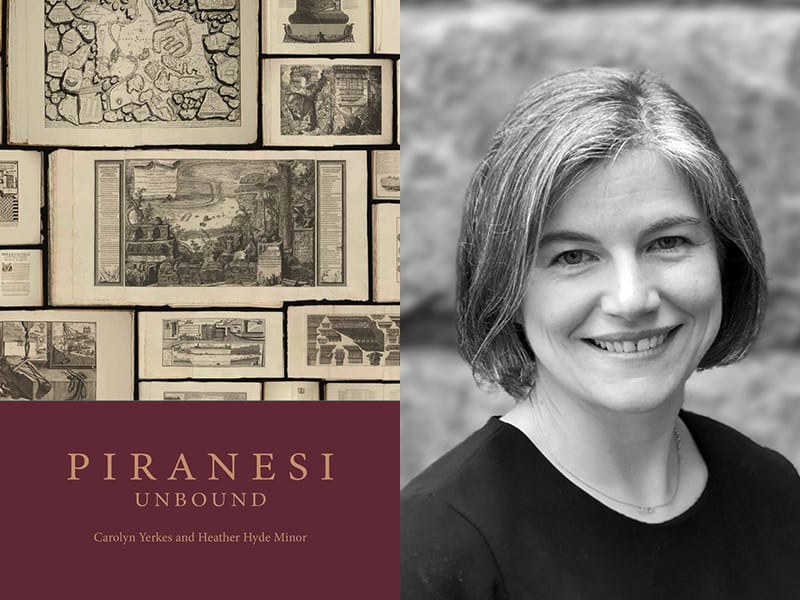Carolyn Yerkes is Associate Professor of Early Modern Architecture in the Department of Art and Archaeology. Her latest book, Piranesi Unbound which was co-authored with Heather Hyde Minor *02, was published by Princeton University Press in September, 2020.
Professor Yerkes and Professor Minor responded to the questionnaire together.
How did you get the idea for this project?
Our book began with our work on an exhibition for Princeton University Libraries. In Piranesi Unbound we examine the artist as a maker of books. In the twentieth century, the typical way to consider Piranesi has been to focus on his achievements as a printmaker. We usually encounter his works in single images framed on walls, but often that was not their original format. We argue that what Piranesi did first and foremost was make books. He combined his etched and engraved images with printed texts in order to make long-form arguments.
Piranesi was born in 1720, and a number of events around the world were planned to mark the tercentenary, including museum shows, conferences, and lectures. 2020 was going to be an exciting year for scholarship on the artist, potentially a watershed moment similar to 1978, when the bicentenary of his death prompted a series of major publications. Art history, as a discipline, is keen on using round-number years as opportunities: we have seen that recently with the big shows marking the 500th anniversaries of the deaths of Leonardo and Raphael. Now most of the events originally planned for this year have been postponed, including our own exhibition, which will open in September 2021. Happily, our book still came out in time.
How has your project developed or changed throughout the research and writing process?
Over time, our research coalesced around a few main ideas. One of them was the way that Piranesi used waste paper. He often made drawings on scraps of paper recycled from other projects. We use those scraps to examine his workshop practice and to hypothesize about a lost Piranesi book. Another idea we followed was Piranesi as the center of a collaborative world. We traced copies of books that he made across their lifespans to see how his relationships with other artists, printers, clients, and readers affected what he made. Research for us meant travel. Tracking down his scrap paper pile, for example, meant studying drawings and books in person in places like London and Paris, as well as a New York City kitchen. Looking carefully together resulted in all kinds of discoveries and new ideas.
What questions for future investigation has the project sparked?
Writing Piranesi Unbound together opened up many avenues of research for both of us. Heather is writing a biography of Piranesi that takes a synoptic view of his entire life. Carolyn is writing a book about the relationship between Piranesi’s art and the economy that he built around it.
Why should people read this book?
We like to think that our book is full of surprises, even for Piranesi experts who know the subject well. We wanted to write a book about a well-known artist that wasn’t like any of the other books about him. Thanks to Princeton University Press, we also think that our book–which is about beautiful books–is beautiful itself. Yve Ludwig, the graphic designer, crafted the book in such a way that it speaks to many of the themes we examine, including page layout, typography, and the relationship between text and image. We investigate the material qualities of books, so it is satisfying to us to have created one that we hope our readers will enjoy for those reasons, too.
Learn more about other recent publications by Princeton University faculty in the Humanities by exploring our Faculty Bookshelf.
















